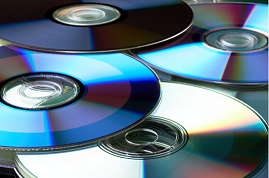
Videos
Through ETEC 531, I developed a couple of YouTube videos using Camtasia. One of my first practice videos was “I am an Artist” available at: https://www.youtube.com/watch?v=Cw8ZVs9HN9M. For this video, the theme was whether or not one considered themselves an artist based on their experiences with art and technology. Thus, it was pretty autobiographical in nature as I utilized digital paintings, pencil sketches, photographs from my trips, and my favourite songs. On my subsequent try (and this time more formal assignment) I developed a media production using storyboarding techniques, and script (more of a narrative essay). I chose to cover a theme on digital memories that was highlighted in ETEC 531’s Culture and Technology course text by Andrew Murphie and John Potts. My media production for ETEC 531 entitled “Digital Memories: Theoretical Frameworks and Implications” can be accessed on YouTube at: https://www.youtube.com/watch?v=zL_AU83N2I8. Through both of these experiences producing media (and YouTube account) for the first time, I learned as my classmates did how much work was involved in the planning, production, editing and finalizing stages of creating a video. For my digital memories video, I had to thoroughly research the topic to cover aspects that linked back to our course material and also make interpretations of the content in order to engage the viewing audience (my classmates and professor). Interestingly enough, I’ve embedded this video into my group’s Moodle course site in keeping with our topic of the human digital memory.

DVDs
Having burned DVDs (as well as CDs, CD-RWs, etc) I reflected on my past experiences for this particular activity as I no longer have the need to burn DVDs (with the advent of YouTube, and a multitude of sites where videos can be watched on-demand). One of the key aspects to the ability of burning a DVD (or CD, CD-RW, etc) is to have a computer/laptop with the capability. For example, I know that most netbooks nowadays don’t have an optical drive which would pretty much eliminate the ability to do this activity. In any event, burning DVDs was straightforward as files needed to be dragged and dropped (or copied and pasted) into the project folder. The tips in the e-learning toolkit to test the DVD after it’s burned is a good one. At times, files are prone to becoming corrupted or malfunctioning and thus testing to ensure that it plays correctly in the initial stages can save time in the long run.